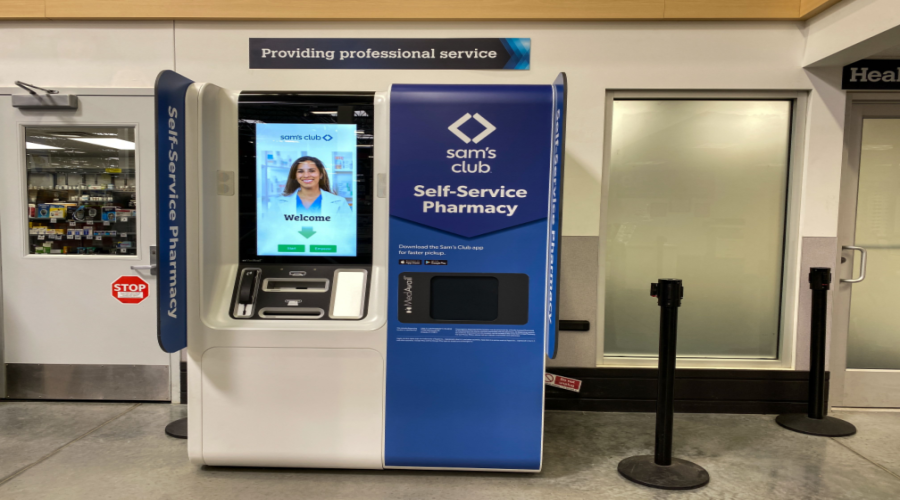As the syllables roll off your tongue, telepharmacy and kiosk pharmacy sound like completely different types of pharmacies. It’s true, they are different. However, they do share some similarities. In fact, they both rely on technology and remote communication with pharmacists. Otherwise, the two are quite different.
Kiosk pharmacy is a highly secure, technologically advanced vending machine. Patients can access it by entering their prescription information.
The way kiosk pharmacy works is pretty simple:
- Tap the screen to initiate a video call with a pharmacist.
- Insert your prescription into a slot to scan. This pharmacist reviews it and conducts a consultation.
- Sign the screen. The pharmacist instructs the kiosk to fill the prescription.
- The kiosk labels the bottle and prints instructions. Then, the prescription dispenses to you through a small door.
The pros of kiosk pharmacy:
- Pick up medications at the point of care.
- Connect with a human pharmacist with a real-time, audio-visual connection.
- Clinic and kiosk pharmacy can work together to stock the specific medications needed by clinic patients.
- Pharmacy services expanding to new locations with lower operating costs.
The cons of kiosk pharmacy:
- Machine security and increased risk of theft.
- Lack of in-person interaction can lead to possible errors.
- Limited help with issues.
- Lack of inventory makes it difficult to obtain the first fill.
Pharmacy kiosks are actually very secure and difficult to break through. In fact, they have to be in sight of surveillance cameras as stated by law. Customers may have payment or insurance issues, or their medication may not be in stock. If so, they may have to take a trip to the host pharmacy.
Now, let’s talk about the telepharmacy process:
- Brick-and-mortar pharmacy locations are often in urban and rural areas. In fact, some may be inside clinics while others operate as standalone retail locations. They have a presence in their community as a place to get not only prescriptions, but other products as well.
- A telepharmacy receives a prescription to be filled.
- A pharmacy technician fills their medication and photographs the process. After that, they send it in real time for verification by the pharmacist located at the host pharmacy.
- A pharmacist counsels the patient over a private and secure video call.
- The technician then completes the transaction with the patient.
The pros of telepharmacy are:
- Pharmacists can open pharmacies in areas that can’t sustain a traditional pharmacy.
- On-site pharmacists working in clinic or hospital settings focus on more clinical tasks. In the meantime, remote pharmacists perform the verification process.
- Access to medications and pharmacy services are provided for patients in underserved areas.
- Struggling pharmacies can stay open in low-volume locations by switching to telepharmacy. By doing so, they can share the cost of a pharmacist to multiple locations.
The cons of telepharmacy:
- There is much skepticism regarding the overall safety of telepharmacy. In fact, some worry that removing the pharmacist from the physical location may lead to errors and diversion. However, telepharmacy has proven to be very safe.
Telepharmacy also provides pharmacists with the opportunity to serve more patients and increase their prescription volume. It allows pharmacists to open pharmacies in locations where traditional pharmacy may not be viable, letting them serve underserved patients in rural and urban areas.
A Member-Owned Company Serving Independent Pharmacies
PBA Health is dedicated to helping independent pharmacies reach their full potential on the buy-side of their business. Founded and owned by pharmacists, PBA Health serves independent pharmacies with group purchasing services, wholesaler contract negotiations, proprietary purchasing tools, and more.
An HDA member, PBA Health operates its own NABP-accredited secondary wholesaler with more than 6,000 SKUs, including brands, generics, narcotics CII-CV, cold-storage products, and over-the-counter (OTC) products — offering the lowest prices in the secondary market.











